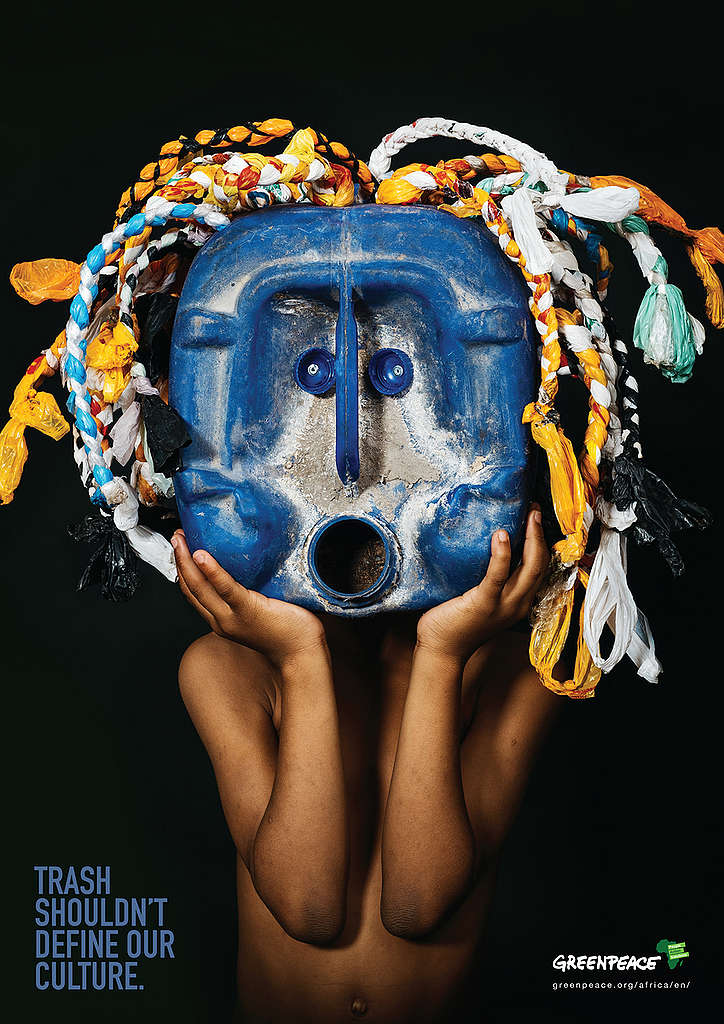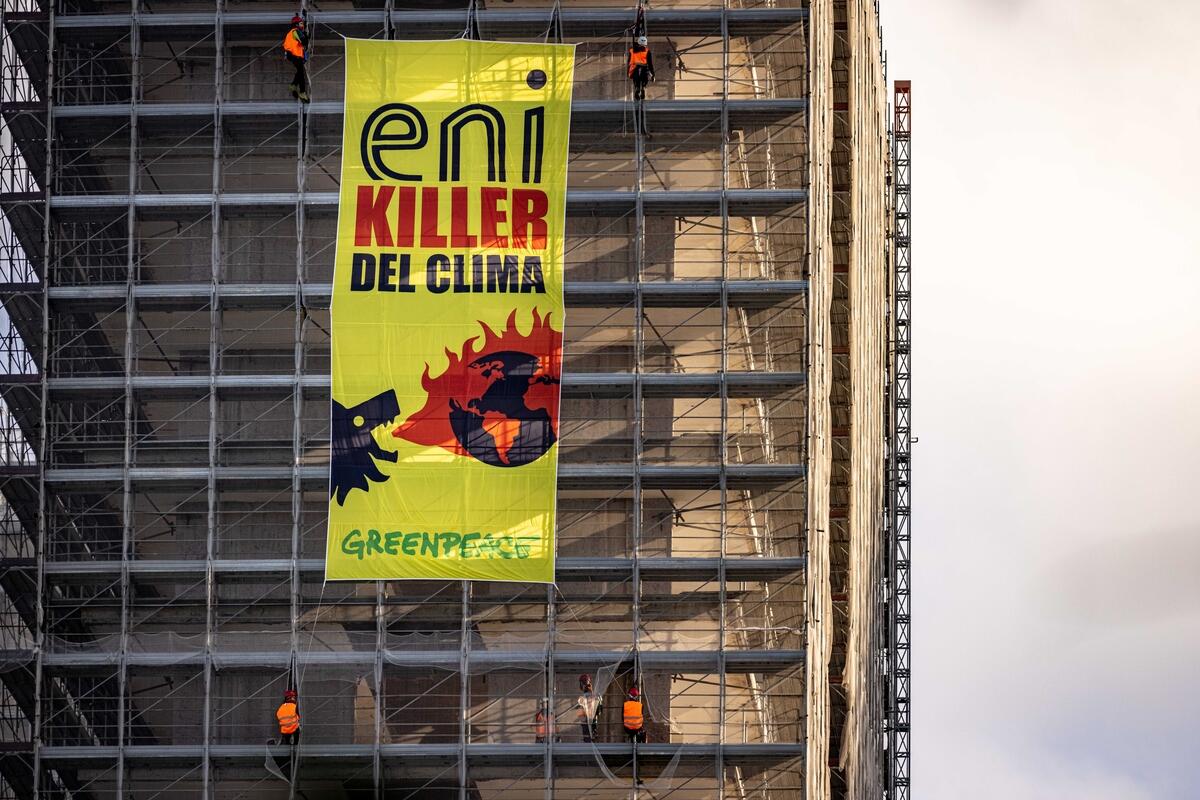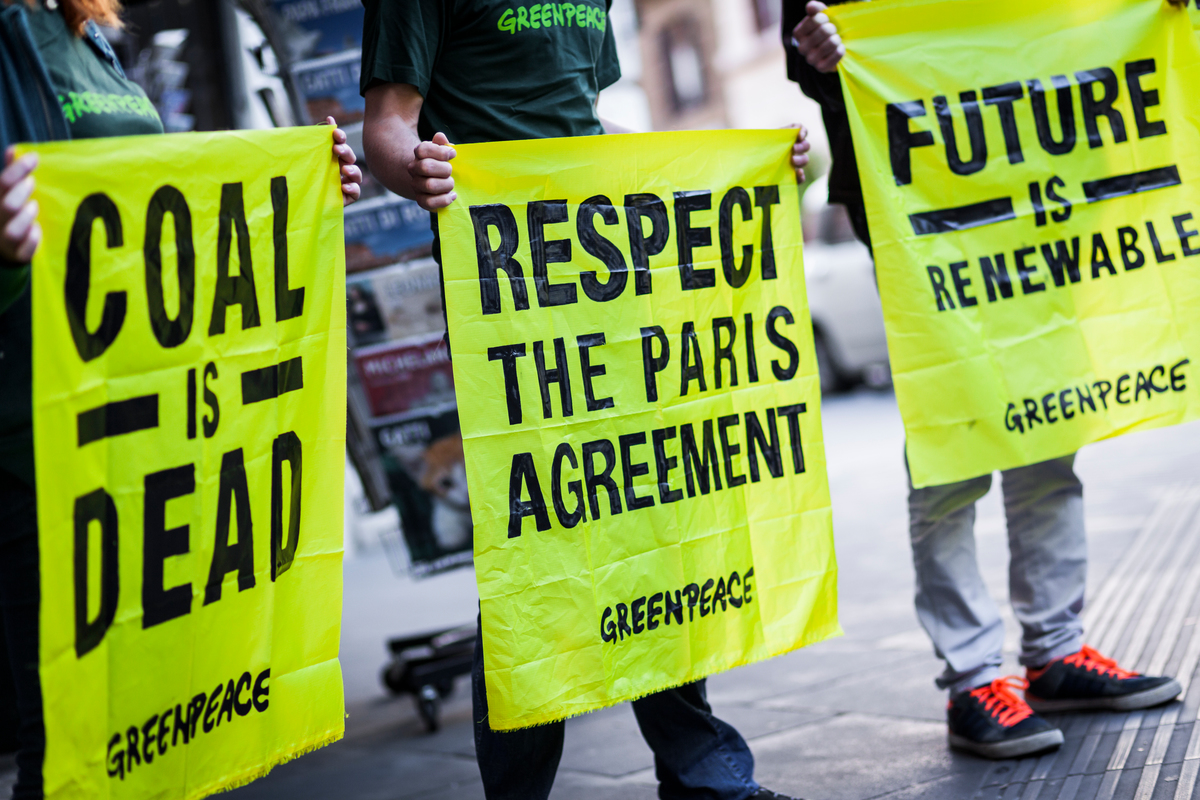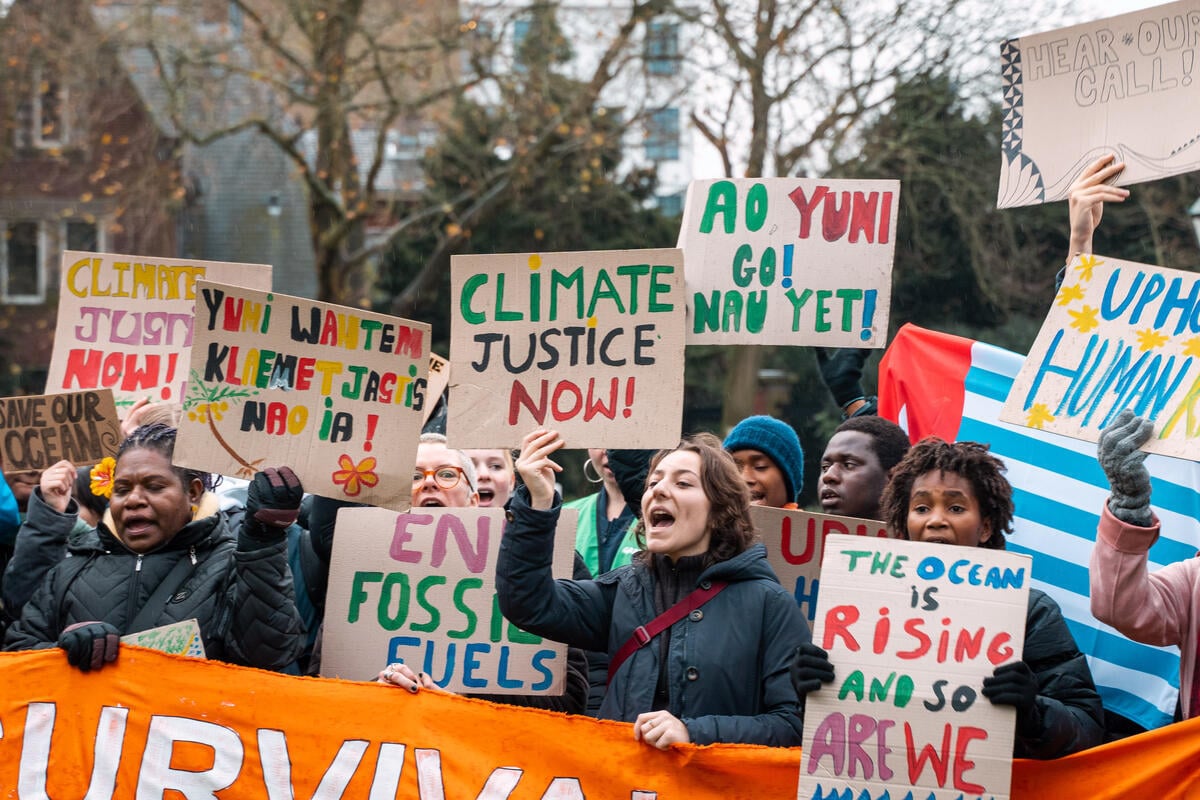A giant whale choking on plastic. Melting ice penguin sculptures. A dance track created using the sounds of the rainforest. A dazzling aerial dance on the side of a building. Throughout our over 50 years of history, Greenpeace has been using the power of art and creativity to inspire action for social and environmental change.
Art can be a powerful and persuasive medium of environmental activism that is accessible to many. We have collaborated with artists and professionals around the world on creative campaigns that seek to protest, provoke and inspire action for a better world for all. Here are just a few examples of Greenpeace’s artistic activism from the last 15 years.
Organic Rice Art, Thailand
In 2009, Greenpeace Thailand took over a rice field, located in Thailand’s Central Plains, one of Southeast Asia’s most fertile rice producing regions, and turned it into edible art. The field, measuring 10 rai or 16,000 square metres, was planted with two varieties of organic rice to depict farmers at work in a rice field. The rice varieties were Chai-nat 1, an irrigated local rice variety, and Khum Phayao, a traditional black rice variety. After four months, hundreds of Greenpeace supporters, volunteers and activists joined the farmers to harvest and share out the rice.
Widely publicised in media all over the world, the rice art celebrates Thailand’s rich and diverse rice heritage. It was also a green reminder to governments to protect the region’s most important food crop from the threats of genetic engineering and to support sustainable farming.
Melting Vitruvian Man, Arctic
In 2011, artist John Quigley recreated Leonardo Da Vinci’s sketch Vitruvian Man from copper on the Arctic sea ice, with help from the crew of the Greenpeace icebreaker Arctic Sunrise. The giant artwork would slowly slip into the icy waters as the ice floe melts. Quigley had said that “climate change is literally eating into the body of our civilization. When he (Da Vinci) did this sketch it was the Enlightenment, the Renaissance, the dawn of this innovative age that continues to this day, but our use of fossil fuels is threatening that.”
Greenpeace commissioned the work to highlight the fact that the Arctic is melting and that world leaders had to take urgent action on climate change. That summer, the sea ice minimum was the lowest on record; it has since continued to decline further. If sea ice were to disappear altogether in the summertime, it would have grave implications for human beings and biodiversity.
All materials were removed after construction and the copper was reused.
Wings of Paradise, Worldwide
From Jakarta to Mexico City, New York to Prague, artists collaborated with Greenpeace to make city walls their canvas in order to draw attention to the destruction of the Indonesian rainforest by the palm oil industry.
The Wings of Paradise project in 2018 had 20 giant murals, many larger than 25 square metres, in 20 cities worldwide. The project was a part of a Greenpeace campaign calling for global brands to protect rainforests, its biodiversity and communities and stop buying palm oil from forest destroyers.
“The Wings of Paradise murals are hopefully a starting point for an open dialogue through creative art-activism. We hope our art will raise awareness and inspire action to protect the rainforests of Papua and its rich biodiversity, at the same time we highlight the beauty and diversity of co-creation,” said one of the artists, Lee Hui Ling, who worked with 30 volunteers to bring to life a 106 square metres mural in Kuala Lumpur, Malaysia.
African Trash Mask, Namibia
To combat trash pollution and to bring awareness to the waste produced by consumerism, Greenpeace Africa worked with Advantage Y&R in 2017 to produce a series of print ads entitled ‘African Trash Masks’. Masks are familiar icons in Africa and the powerful imagery was used to start conversations on pollution and its impact on future generations.
The striking masks were created by Namibian artists Petrus Shiimi and Saima Iita. The ads were run in newspapers and displayed on street poles as well as distributed as posters in schools and colleges to inspire young people to think about disposing of rubbish responsibly.

Vertical Dance, Taiwan
In 2017, Greenpeace Taiwan volunteers rappelled down the side of the Environmental Protection Agency’s (EPA) building to perform a daring aerial dance to the amazement of on-lookers below. Working with professional dance choreographers and trainers, the participants trained for six months to portray marine animals that had mistakenly eaten plastic waste and suffocated.
The dance was part of a series of events to highlight the plastic pollution problem in oceans and to promote sustainable ways to cut down on plastic use.
Save Our Sounds, Southeast Asia
As our jungles disappear, so will the fascinating calls of the wild. In 2017, Indonesian DJ Ninda Felina travelled to Kalasou valley in West Papua to record and capture the sounds of the Papuan rainforest for Greenpeace and BBDO Singapore’s Save Our Sounds (SOS) project. Using these unique sounds, she collaborated with international music producer Ben Rosen to create the dance music track “Birds of Paradise”. The purpose of the groundbreaking project was to bring the sounds of the jungle to the people of Jakarta and to raise public awareness of deforestation.
“Learning to really listen to the forest inspired me, and I hope that these sounds will not only give new colour to my music, but also inspire others to start paying attention to the forest and take action to preserve it,” said DJ Ninda.
The track was first released in Jakarta before being performed as part of DJ Ninda’s set at Wonderfruit Festival in Thailand.
Visit the link www.sosforests.org to hear the track, learn more about the project and even to create your own tune using the forest sounds recorded by Ninda and the team in West Papua.
Giant Choking Whale, Italy
Greenpeace Italy joined the Viareggio Carnival in 2019 with a giant dying whale choking in single-use plastic. Created by artist Robert Vannucci, the 20-metres high artwork was to send a strong reminder to big corporations to break free from plastic that is polluting our oceans. Marching with the whale were Greenpeace volunteers carrying the slogan “The sea is not disposable”.
“We must immediately stop using single-use plastics, very often useless and superfluous, to save our seas and our planet. For many years we have been asking big corporations to focus on reducing their reliance on plastic packaging. It is important that such an urgent message about our seas is sent from a well-known and well-attended event like the Viareggio Carnival,” said Giuseppe Ungherese, Greenpeace Italy’s Toxics campaigner.
Penguin Ice Sculptures, Worldwide
In 2020, ‘disappearing’ penguin ice sculptures appeared in capitals around the world, from Seoul to London, Buenos Aires to Cape Town. The artwork was to demand urgent action for a Global Ocean Treaty to protect ocean wildlife, including chinstrap penguin colonies that have declined drastically since they were last surveyed almost 50 years ago. The Treaty is to ensure that 30% of global oceans are protected by a network of sanctuaries by 2030, so that marine life like penguins have the space to recover from human activity and adapt to rapidly changing climate.
Illegal Mining Protest, Brazil
In April of 2022, Indigenous leaders and activists, in collaboration with Greenpeace Brazil, organised a creative march to protest against Bill 191, which aims to legalise illegal mining in Indigenous lands. The participants marched to the Ministry of Mines and Energy building, smeared with scenographic blood and mud, representing the death toll, violence and suffering caused by illegal mining.
Giant gold bars with the words ‘Crime’ on them were placed outside the building, together with a giant banner created by Bahian artist Ibraim Nascimento to illustrate the war that the Indigenous people waged against mining. Made with paint, mud and scenographic blood, the panel featured interactions from representatives of different peoples, who used their hands and feet to fill the panel with blood and dirt.
“It’s not just Indigenous Peoples. We are all mud up to our necks and saturated with this horror scenario we are living. We are killing people, destroying cultures and this cannot continue. This art has a special meaning because it is part of a struggle, it is an act of activism,” said Ibraim.



